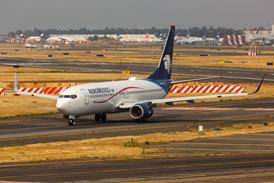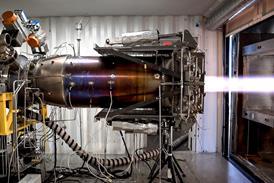A scale-model reusable first-stage flyback booster has been flight tested by Lockheed Martin Space Systems for an internally funded unmanned two-stage orbital transportation system, designed for low operational costs.
The 2.44m (8ft) long, 1.83m wingspan vehicle's test follows four years of work involving concept trade studies, computational fluid dynamics, wind tunnel work and earlier models' flights.
|
|---|
Above: Lockheed Martin Space System's scale-model first-stage flyback booster during its 100s test flight |
The "roughly fifth" scale-model has a delta wing with winglets and canards for the control required by the full-size vehicle's high-speed return.
The 100s flight from New Mexico's Spaceport America simulated a typical trajectory with vertical launch and controlled glide to the landing site.
Simpson declined to talk about related upper-stage work or the first-stage's rocket motor. Ground support systems have been automated to reduce the launch site's crew numbers.
|
|---|
Above: Lockheed Martin Space System's scale-model reusable first-stage flyback booster launches on its 100s flight |
Source: FlightGlobal.com






















